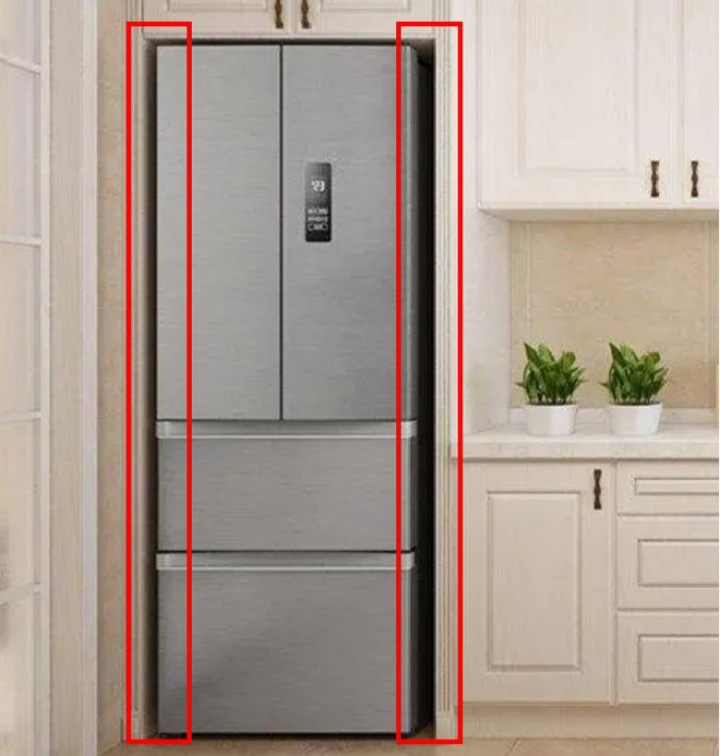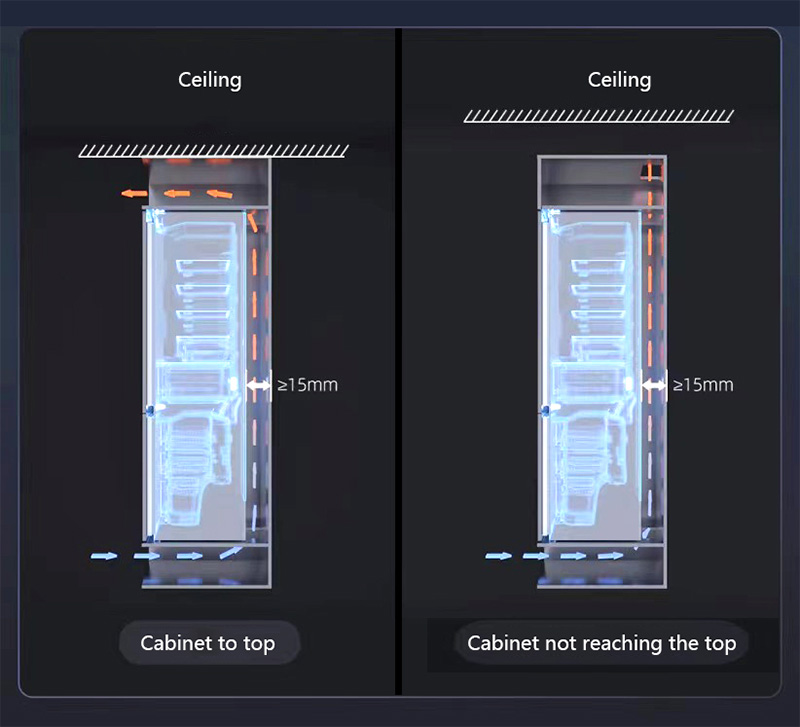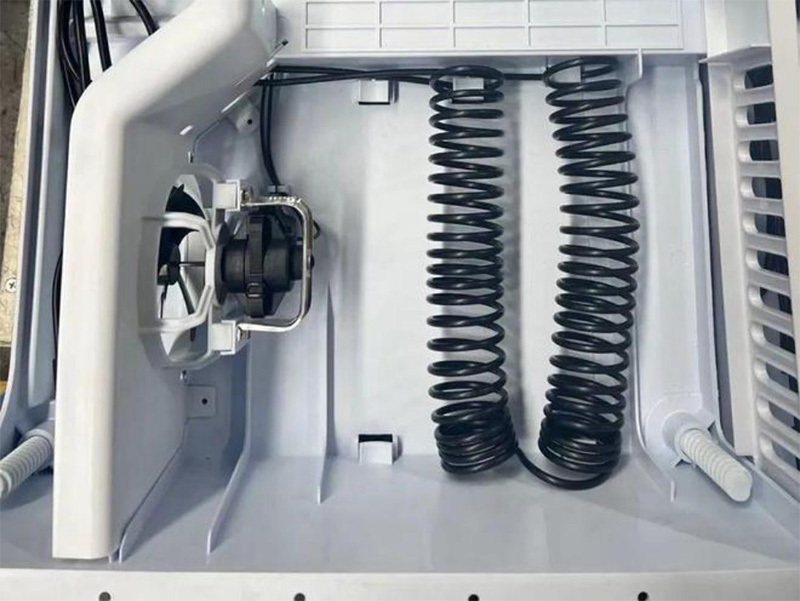Should embedded refrigerators apply back or bottom cooling? I believe many users are struggling with this issue. At present, domestic users generally do not have a deep understanding of embedded refrigerators, and there are still concerns about the heat dissipation of embedded refrigerators. This article takes everyone to understand the two heat dissipation methods of lower back side heat dissipation and bottom side heat dissipation!
Considering aesthetic feeling and good looking, general independent refrigerators on the market commonly apply condensers equipped on both sides, which requires a 10-20cm heat dissipation space on both sides of the refrigerator, in this way the condensers wont be seen from the front. However, the embedded refrigerator is usually embedded in the cabinet with 0 gaps, and both sides are tightly connected to the cabinet board. Apparently, this type of heat dissipation method that’s built into the condenser is not suitable for embedded refrigerators.


Back side heat dissipation
Back side heat dissipation is a widely used cooling method for embedded refrigerators in the current market. The condenser is placed externally on the back of the refrigerator, and ventilation openings are reserved above and below the cabinet. The air enters through the ventilation openings at the bottom, allowing the back condenser to fully come into contact with cold air. Then the air takes away the heat energy on the condenser, while the hot air rises and exits through the ventilation openings at the top. Repeating this natural circulation and efficient heat dissipation is achieved.
As far as is known, this heat dissipation method utilizes the principle of air circulation to achieve natural heat dissipation, which is a physical cooling process without the need for other external objects such as fans. Therefore, it is more silent and energy-saving while efficiently dissipating heat.
Admittedly, back side heat dissipation is a relatively traditional way of heat dissipation, which has undergone time testing and market validation. This technology has been more mature, and almost no risk of poor heat dissipation by reserving ventilation openings. However, the disadvantage is that the cabinet needs to be perforated as a vent, but as long as the design is appropriate, it will not have any impact on the cabinet.
Bottom side heat dissipation
Another cooling method that embedded refrigerators apply is bottom cooling. This heat dissipation method involves installing a fan at the bottom of the refrigerator to assist in cooling the condenser. The advantage here is that there is no need to open holes in the cabinet for ventilation, making installation very convenient. Additionally, this is a new technology that will be a new choice for those who are passionate about experiencing new things.

However, the disadvantage of this method is also obvious: the small bottom area determines the small thermal conductivity area, which means if the refrigerator has a large capacity, the heat dissipation will be relatively slow. Due to the need of using fans to improve heat dissipation efficiency, it is inevitable to generate certain noise and increase electricity consumption.
In addition, as a new technology, it is difficult to ensure the stability of this heat dissipation method in just a few years of application, which may result in a high machine failure rate.
The choice between back side cooling or bottom side cooling should ultimately be made by users based on their own needs. If we only consider pursuing new technologies without thinking about the impact caused by its immaturity, it will undoubtedly increase the trial and error cost.
A small suggestion: In the selection of heat dissipation methods, it is recommended to seek stability rather than blindly seeking for novelty.
Post time: May-06-2023
